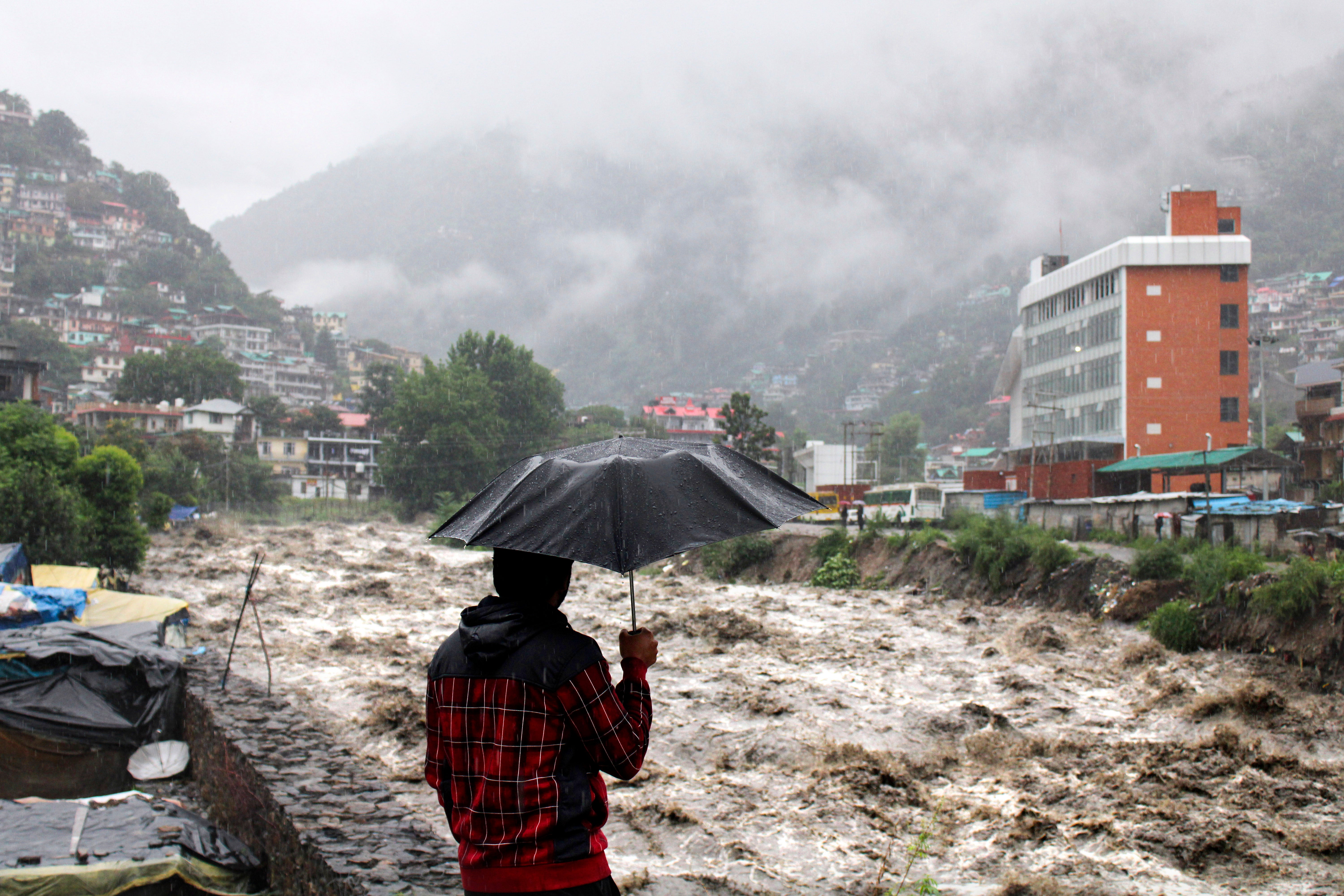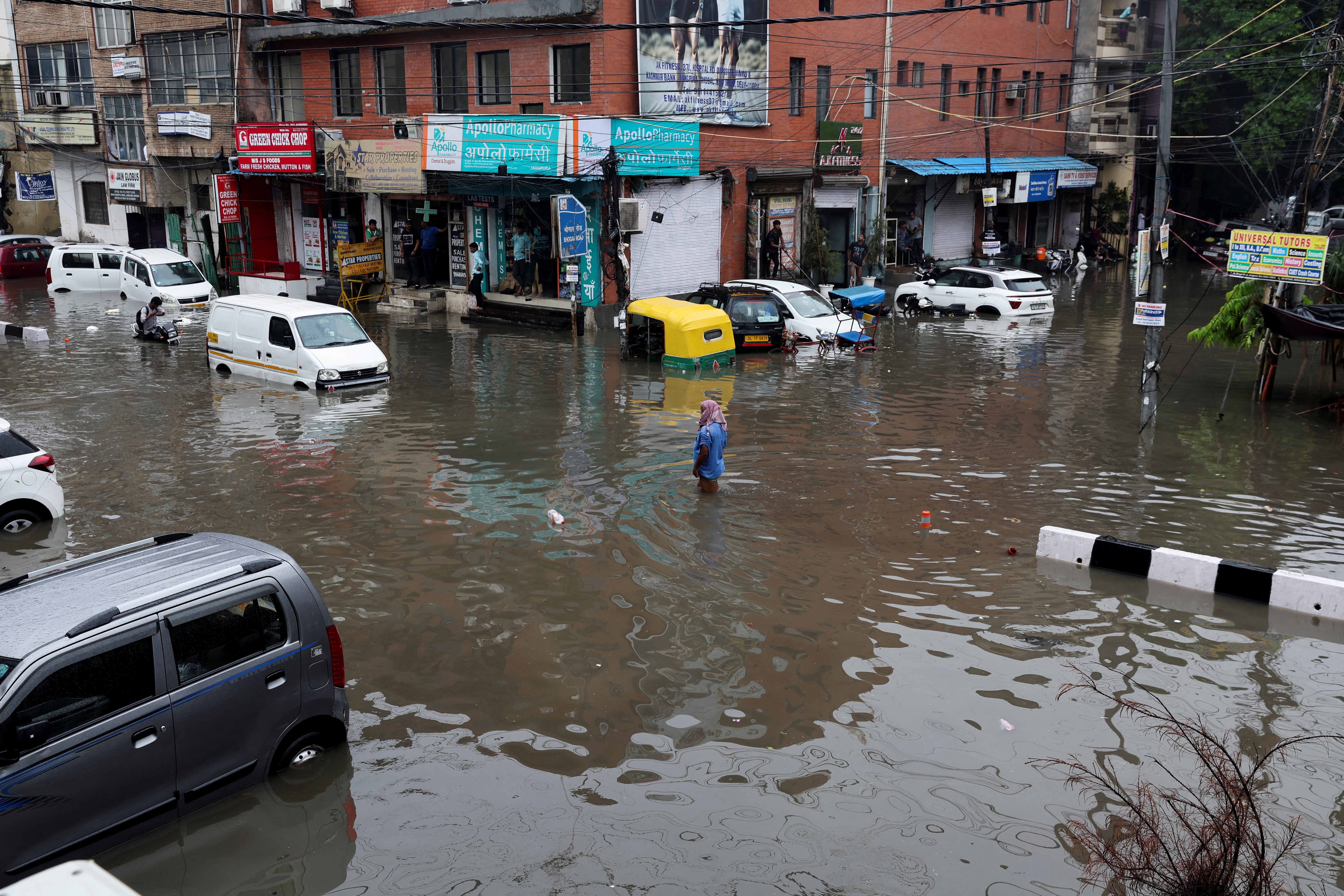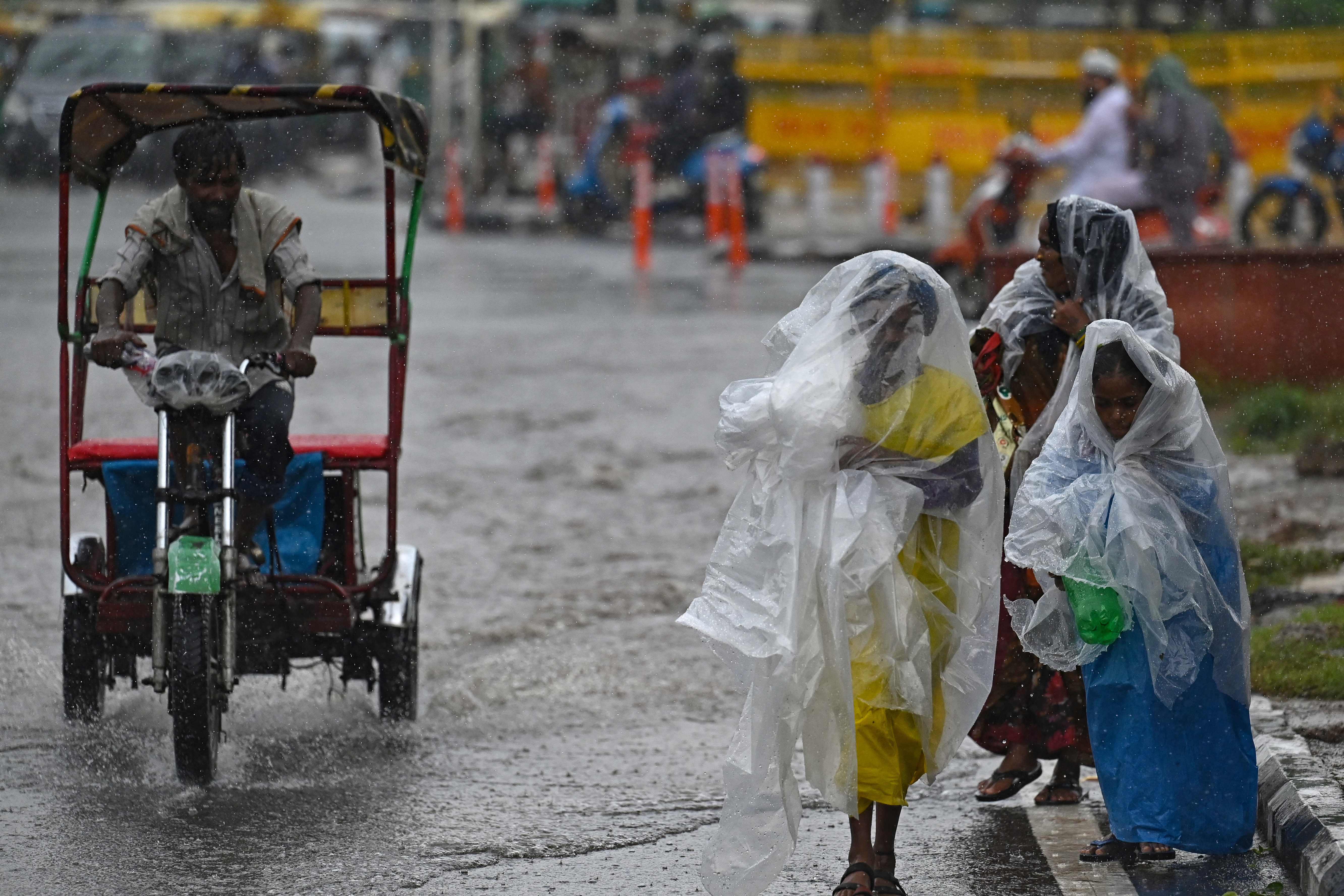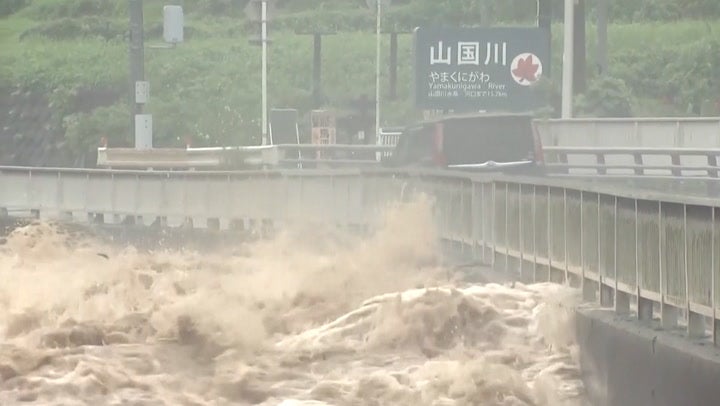As heavy rains kill more than 100 in India, what is making south Asia’s monsoons more deadly?
India’s deadly monsoon is due to a unique alignment in weather systems, but experts reveal there to be a familiar reason behind it all

Your support helps us to tell the story
From reproductive rights to climate change to Big Tech, The Independent is on the ground when the story is developing. Whether it's investigating the financials of Elon Musk's pro-Trump PAC or producing our latest documentary, 'The A Word', which shines a light on the American women fighting for reproductive rights, we know how important it is to parse out the facts from the messaging.
At such a critical moment in US history, we need reporters on the ground. Your donation allows us to keep sending journalists to speak to both sides of the story.
The Independent is trusted by Americans across the entire political spectrum. And unlike many other quality news outlets, we choose not to lock Americans out of our reporting and analysis with paywalls. We believe quality journalism should be available to everyone, paid for by those who can afford it.
Your support makes all the difference.Torrential downpours this week have led to the deaths of 100 people and unleashed havoc in northern India in what officials have described as the worst monsoon the country has experienced in decades.
The deadly monsoon comes as several other nations across the world grapple with similar extreme weather.
The northeastern US is under a state of emergency, China is evacuating thousands of people, and Japan has reported its “heaviest rain ever experienced”, according to its weather department officials.
Rains have battered neighbouring Pakistan as well, and the death toll there as of Tuesday evening had reached 86 since 25 June. The deaths have been a reminder of the deadly deluge that devastated the country just a year ago.
In India, downpours have lashed several areas, from western Rajasthan to northern Jammu and Kashmir, and have killed at least 100, with thousands more left stranded as key highways were damaged.
A massive downpour in Delhi has left large swathes of the national capital submerged, including the central area around Connaught Place, while several key government buildings are also affected. On Sunday, Delhi received its highest amount of rain on a single day in July since the 1980s.
People were seen wading through knee-deep water, and several motorists became stuck on roads that had turned into rivers.
The Yamuna River, which cuts across Delhi, passed the danger mark of 205 metres above mean sea level, as incessant rain combined with dam water released from neighbouring Haryana prompted evacuations.
On Wednesday, the river flowed close to 207.25m, precariously close to the all-time record of 207.49m reached in 1978, government officials said.

The rains were far deadlier in the fragile mountainous states of Himachal Pradesh, the northern state most severely affected, and Uttarakhand, where they triggered severe floods and deadly landslides, killing dozens.
Shocking images showed floods washing away villages and key highways, disrupting essential services, in Jammu and Kashmir, Himachal Pradesh, Uttarakhand and Punjab.
Floodwaters blocked the Indo-Tibet border road, while contact was lost with more than a dozen border villages.
Heavy rain and falling boulders killed four people and injured seven others in Uttarakhand on Tuesday. At least 20 people died in flash floods and other rain-related disasters in just one province of Himachal Pradesh.
State chief minister Sukhvinder Sukhu on Monday said Himachal had not witnessed such widespread heavy rains in more than 50 years.
This year’s monsoon has raised concern among experts, who warn that the climate crisis is playing a significant role in the intensification of such extreme weather.
“It rains fewer hours, but when it rains, it rains very heavily,” observed M Rajeevan, a former secretary of India’s Ministry of Earth Sciences, according to the Hindustan Times. “Recent heavy rains and flash floods remind us of one of the important impacts of climate change on monsoon,” he said.
South Asia receives approximately 70-80 per cent of its annual rainfall during the monsoon season, which normally starts in late June. This weather event often has severe consequences for a region that is vulnerable to flash floods because of its lack of adequate infrastructure.
This year’s monsoon, however, which began on 1 June, has brought significantly higher levels of rainfall in Delhi, Punjab and Himachal, with the regions seeing an increase of 112 per cent, 100 per cent and 70 per cent respectively, according to the India Meteorological Department.
Climate scientists have raised the alarm over the monsoon’s changing patterns, which are making rain more erratic, resulting in much more falling in a short period and leading to flash floods.
“The ongoing spell of extremely heavy rains is due to the alignment of three weather systems: western disturbance over Western Himalayas, cyclonic circulation over northwestern plains, and axis of monsoon trough running across Indo-Gangetic Plains,” explained Mahesh Palawat, vice-president of meteorology and climate change at private weather agency Skymet.

“This alignment is not happening for the first time, and is the usual pattern during the monsoon. However, global-warming-led changes in monsoon patterns have made a difference,” he added.
“There has been a constant rise in both land and sea temperatures, which has increased the capacity of the air to hold moisture for a longer time. Thus, the role of climate change in the increasing extreme weather events in India has been strengthening with each passing year.”
Research has already established the impact of the climate crisis on south Asia’s monsoon patterns. Last year’s devastating floods in Pakistan were also found to be a result of the effect of the climate crisis on monsoon patterns.
But with this year’s record-shattering global warming, experts have said that heat is also meddling with atmospheric and oceanic phenomena.
“There have been extreme weather events earlier as well, but 2023 has been a unique year,” said Raghu Murtugudde, professor of atmospheric and oceanic science at the University of Maryland.
“Global warming is making a significant contribution, but there are some other factors as well,” Dr Murtugudde explained, adding that the El Nino pattern, record North Atlantic Ocean temperatures, and exceptional warming in the Arabian Sea in recent years are among the contributing factors.

He also said that with wildfires being three times larger, more carbon is being released into the atmosphere, increasing greenhouse gases.
A recent report by India’s earth sciences ministry found that overall monsoon rainfall, which already leads to repeated flooding, is projected to become more intense in the future and will affect larger areas, driven by the climate crisis.
India has already faced back-to-back deadly heatwaves, more frequent extreme temperature and rainfall events, droughts, sea-level rises, and intensified severe cyclones.
The Intergovernmental Panel on Climate Change (IPCC) has warned of summer and monsoon precipitation increasing and becoming more frequent, with the Indian subcontinent projected to experience a 20 per cent surge in extreme rain events in the coming years.






Join our commenting forum
Join thought-provoking conversations, follow other Independent readers and see their replies
Comments